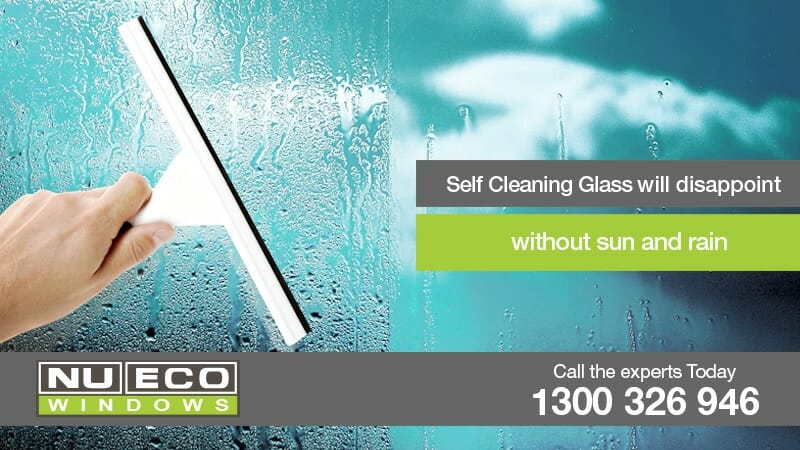Self-cleaning glass suggests an impeccable view and freedom from washing windows, but if you install it in your windows and retire your window scrubber with this in mind, you will be disappointed.
This state-of-the-art glass consistently demonstrates that it requires minimal maintenance, but before you invest in it, familiarize yourself with how it works and where it should be installed to avoid disappointment.
How does self-cleaning glass work?
Everyday glassmaking companies pour tons of sand into their furnaces to melt and then channel the liquid sand into vats of molten tin to cool as perfectly flat, transparent glass.
Any glass that is destined to be self-cleaning is coated on one side with a microscopic coating of titanium dioxide before it is completely cool. Titanium saves you time, effort and dollars by cleaning the glass in two basic steps:
- Uses sunshine to decompose organic dirt – Titanium dioxide is a photocatalyst. As ultraviolet rays from direct sunlight warm the titanium dioxide, it releases electrons which bond with water molecules in the atmosphere to form hydroxyl radicals.These free radicals immediately connect with organic dirt on the glass and accelerate the natural process of decomposition. Over a period of time, the titanium dioxide breaks down all the organic dirt into small, loose particles.
- Transforms water droplets into a sheet – Regular glass resists water. This resistance causes rain to form droplets when it hits windows. These droplets collect and run off in rivulets leaving behind streaks of dirt and water spots. Titanium dioxide solves this problem by forming chemical bonds with the water.As titanium electrons bond with hydrogen molecules in rain the water spreads out and runs evenly across the glass. This sheet of water carries away the decomposed organic dirt and then dries quickly decreasing residual streaks and spots.
Where is self-cleaning glass effective?
Self-cleaning glass has been facilitating the job of home and business caretakers for almost twenty years. However if you want to receive its benefits, you need to install it in an appropriate place. Self-cleaning glass will only be effective in places that have:
- Direct sunlight – Titanium dioxide remains unreactive without sunlight. It must absorb the ultraviolet rays of the sun to begin releasing electrons which speed up the decomposition of organic matter. The amount of sunshine that the glass receives greatly influences whether the self-cleaning glass takes days, weeks, months or even longer to rid itself of organic dirt.
- Frequent Rainfall – During the decomposition process, the free radicals produced by the titanium slowly transform the leaves, insects, feathers and other organic matter collected on the glass into simpler compounds. These compounds lie loosely on the glass until sheets of rain water wash them away. Frequent rainfall also washes excess leaves and grains of non-degradable sand off the glass which allows the titanium dioxide to work its best.
Considering that self-cleaning glass requires ample sunshine and rain to be effective, it is most useful in roof applications, such as skylights, winter gardens and glass canopies. You should consider carefully before installing it in windows, since most roof overhangs keep windows from receiving direct sun and rain.
In conclusion, self-cleaning glass can save you time, work and the cost of cleaning supplies. It is low maintenance, but only if it receives sunshine and rain on a regular basis.

